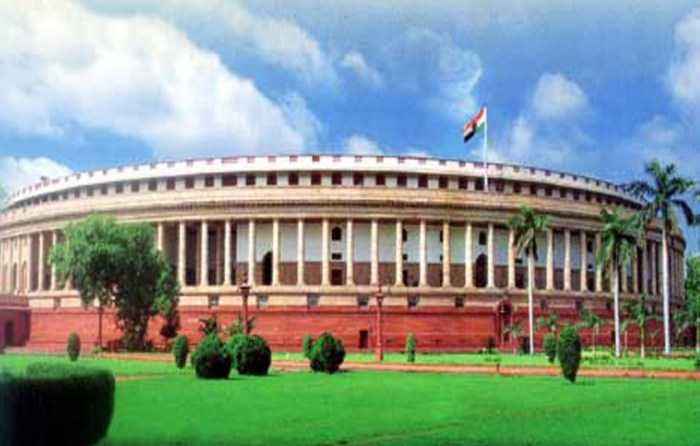Is Balanced Funds an alternative to Equity Mutual funds

It is common knowledge in finance that equities as an asset class delivers superior returns over the long term, and as such is one of the best investment options for investors with high risk appetites. However, for investors with moderate appetite for volatility (or risk), balanced funds are an excellent investment options. Balanced funds have been in existence in India for nearly two decades. These funds typically have 60 – 70% of the portfolio invested in equities and the rest in fixed income securities. On a risk adjusted basis top performing balanced funds have delivered excellent returns compared to equity mutual funds. The chart below shows a comparison of returns between top performers in the large cap and balanced funds over the time periods shown below (based on Feb 11, NAVsi)

If you look at the comparison of average returns for these two categories, you will see mixed performance (see the chart below).

Therefore, while the top performing balanced funds have fared very well in comparison to their large cap equity counterparts (factoring their substantially lower risk), it is important to select the right scheme to generate the attractive investment returns in line with your financial planning objectives.
In this article, we will review the top performing balanced funds. As with all mutual fund investments, recent performance may not always be sustained in the future. One needs to look at a number of parameters to compare and rank schemes relative to their peer group. CRISIL evaluates balanced funds based on several parameters like average 3 year annualized returns, volatility, industry concentration risk, company concentrations risk, debt asset quality, debt liquidity and equity liquidity. CRISIL has assigned different weightages to each parameter with average 3 year annualized return adjusted for volatility accorded the highest weightage at 75%, industry concentration risk at 10%, company concentration risk at 5% and debt asset quality at 5% of debt allocation percentage, debt liquidity at 5% of debt allocation percentage and equity liquidity at 5% of equity allocation percentage. While the weightages of the last 3 parameters are slightly complicated, it suffices to say that, risk adjusted returns and balanced portfolio construction are the most important considerations, as far balanced funds are concerned. Here is the list of top 5 Balanced Funds on the basis of their 3 year annualized returns:-
HDFC Children’s Gift Investment:
This scheme is clearly a star from the point of view of returns. HDFC Children’s Gift Investment was launched in 2001 and has provided the highest 3 year annualized return at 13.5%. It has been a consistent performer with last one year return at a stellar, 15.7%. On a five year and ten year basis, it has delivered 24.7% and 14.8% returns, respectively. Despite the high returns, it fares well against its peer group in terms of volatility of returns. The portfolio has large allocation of 71% to equities and 29% to fixed income, with 4% in bonds and 25% in cash equivalents. Its equity portfolio has a large cap bias with large cap companies comprising 75% of equity holdings. The fund is sufficiently diversified, with its top equity holdings Sun Pharma, Infosys, Astral Poly Technik Limited, Motherson Sumi Systems and IPCA constituting only 17% of the portfolio. In terms of sectoral composition IT, healthcare and consumer cyclical form the top 3 sectors with 54% of the portfolio holdings. As far as the fixed income portfolio is concerned, cash equivalents comprise 84%, corporate bonds 13% and government bonds 3%.ICICI Prudential Balanced Advantage Fund:
This scheme was launched in 2006 and has provided the second highest 3 year annualized return at 12.6%. In the last one year it has outperformed the balanced fund category with returns at 9.5%. The scheme’s five year annualized return is 17.9%. In terms of risk measures, the volatility of returns is amongst the lowest, primarily on account of the fact that the portfolio has comparatively a more conservative allocation to equities at 58%, while 42% is allocated to fixed income, with 14% in bonds and 28% in cash equivalents. Its equity portfolio has a large cap bias with large cap companies, comprising 75% of equity holdings. The fund is sufficiently well diversified, with its top holdings, Nifty futures, HDFC Bank, G-Secs, Tech Mahindra and ICIC I Bank accounting for 27% of the portfolio. In terms of sectoral allocation financial services, IT and consumer cyclicals comprise 59% of the portfolio holdings. As far as the fixed income portfolio is concerned, cash equivalents comprise 67%, corporate bonds 12% and government bonds 21%.ICICI Prudential Balanced Growth:
This open ended scheme has been in existence since 1999 and ranks third in terms of 3 year annualized return, which stands at 12.3%. While the last one year return is 9.7%, on a longer time horizon, particularly over a five and ten year time horizon, the annualized returns are 18.6% and 14.2% respectively. The portfolio has a 67% allocation to equities and 33% to fixed income, with 27% in bonds and 6% in cash equivalents. Despite its low volatility, the Sharpe Ratio of the fund, a measure of superior risk adjusted returns, is one the best in the peer set. The portfolio has a large cap bias, but is sufficiently well diversified with G-Secs, Govt of Gujarat bonds, Infosys and Dr Reddy’s comprising 23% of the portfolio value. From an industry concentration perspective, consumer cyclicals, financial services and IT comprise the top 3 sectors with over 57% of the portfolio. Government bonds constitute 57%, corporate bonds 23% and cash equivalents 20% of the fixed income portfolioHDFC Balanced Growth Fund:
This scheme was launched in 2000. Its three year annualized return stand at 10.36%. In the last one year the fund has given returns of 10%, while it’s five and ten year annualized returns are attractive compared to its peer set, at 21.7% and 15% respectively. The volatility of returns of HDFC Balanced Growth Fund is relatively low, and the fund has given good risk adjusted returns relative to its peer group. This is despite the fact that nearly 70% of the portfolio allocation is weighted to equities. Fixed income securities account for 30% of the portfolio, with bonds at 15% and cash equivalents at 15%. The fund has a large to mid cap bias, with the top five holdings, Infosys, Shriram Transport, TCS, Aurobindo Pharma and Mindtree comprising only 15% of the portfolio holdings. While this makes the portfolio very well diversified, some of the top stocks have performed very well over the last twelve months, generating superior returns for the fund. As far as the fixed income portfolio is concerned, cash equivalents is 44%, corporate bonds 33% and government bonds comprise 23% of the fixed income portfolioTata Balanced Growth Fund:
This is one the oldest schemes in this category, launched in 1995. The three year annualized return is 10.1%. The one year return at 7%, though better than the category average, is lower than what the top 4 funds (in this article) have delivered. The five year and ten year annualized returns though, are 19.7% and 16.2% respectively, better than most of the funds mentioned above. In terms of volatility of returns, this scheme compares with the best in its peer set. As far as asset allocation is concerned, 73% of the fund’s portfolio is weighted to equities, and fixed income securities comprise 27%. The scheme has a predominantly large cap bias. However, the portfolio is well balanced with the top five holdings including, G-Secs, HCL Tech, United Spirits, TCS and HDFC Bank comprising 22% of the portfolio. The fund has a sectoral bias towards IT, Financial Services and Consumer cyclical, but is well diversified across sectors. From a fixed income portfolio perspective, government bonds are 53%, corporate bonds 26% and cash equivalents are 21% of the fixed income portfolio.
In conclusion, we need to look at several parameters, before selecting a balanced fund scheme that is suitable for our requirements. The table below summarizes some of the key parameters, as discussed above. It is important that we select a scheme that has a strong track record of the Asset Management Company (AMC) and the fund manager. You should consult with your financial advisors in helping you select a scheme, at the same time monitor closely the performance of the schemes and make sure the performance is in line with your expectations.

Queries
-
What is the benefit of mutual fund STP
Aug 29, 2019
-
How much to invest to meet target amount of Rs 2 Crores
Aug 26, 2019
-
Can I achieve my financial goals with my current mutual fund investments
Aug 24, 2019
-
Can you tell me return of various indices
Aug 19, 2019
-
What would be the post tax return on different investments
Aug 18, 2019
-
Which Principal Mutual Fund scheme will be suitable for my retirement corpus
Aug 16, 2019
-
What is the minimum holding period for availing NCD interest
Aug 4, 2019
Top Performing Mutual Funds
Recommended Reading
Fund News
-
Leveraging the PSU rally to sustain capex growth
Apr 10, 2024 by Axis Mutual Fund
-
Bandhan Mutual Fund launches Bandhan Innovation Fund
Apr 10, 2024 by Advisorkhoj Team
-
Tata Mutual Fund launches Tata Nifty500 Multicap Infrastructure 50:30:20 Index Fund
Apr 8, 2024 by Advisorkhoj Team
-
Tata Mutual Fund launches Tata Nifty500 Multicap India Manufacturing 50:30:20 Index Fund
Apr 8, 2024 by Advisorkhoj Team
-
Tata Mutual Fund launches Tata Nifty Realty Index Fund
Apr 8, 2024 by Advisorkhoj Team













